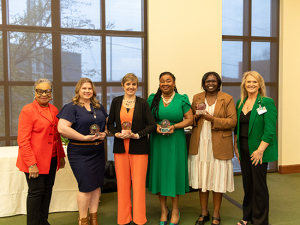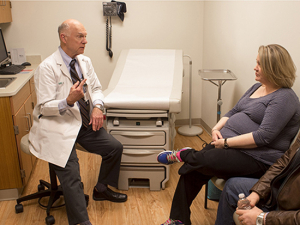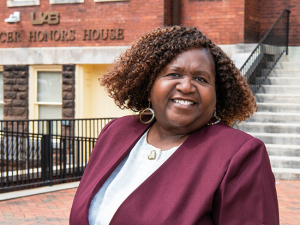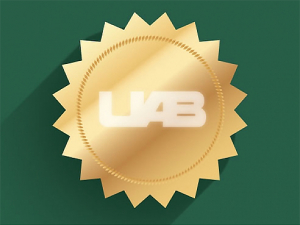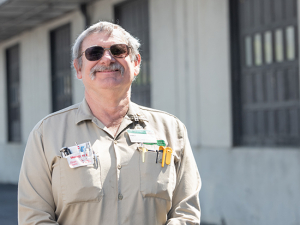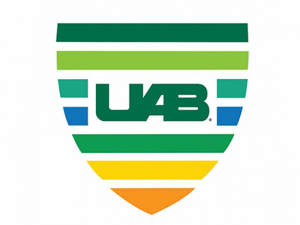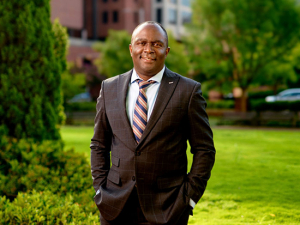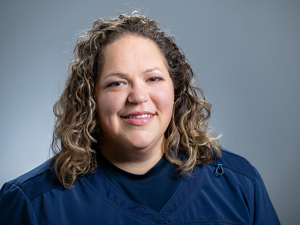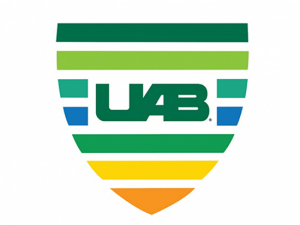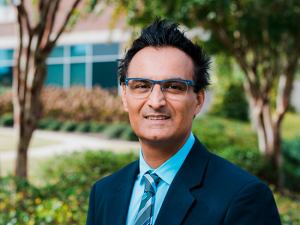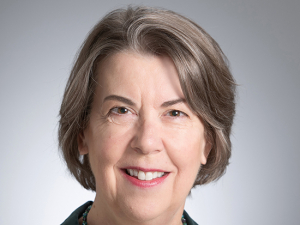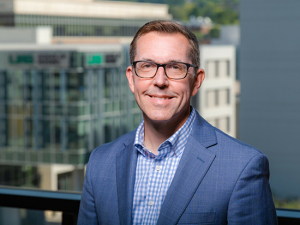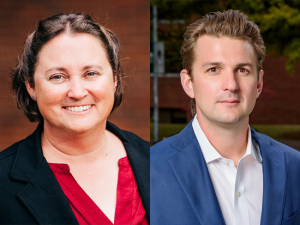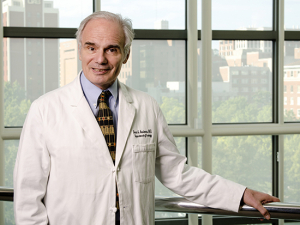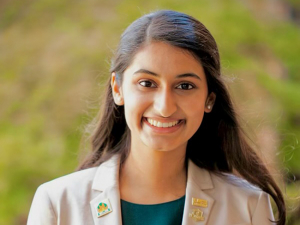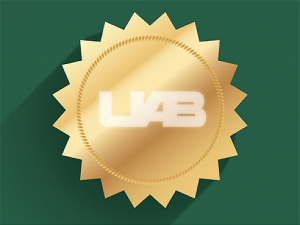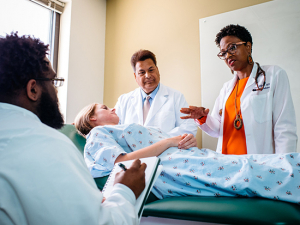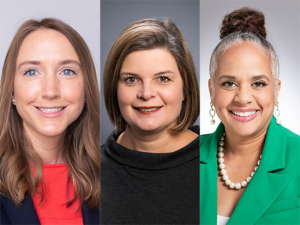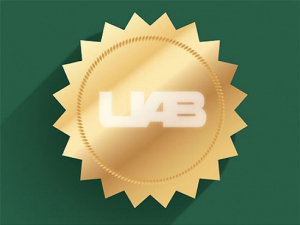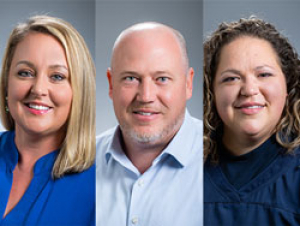Never underestimate the power of a well-timed sabbatical. In 1978, as a young researcher in UAB's Department of Microbiology, John F. Kearney, Ph.D., traveled to Germany to learn how to produce monoclonal antibodies — lab-created proteins that can home in on a single substance in the body. He ended up making a discovery that facilitated new treatments in breast cancer, rheumatoid arthritis and more.
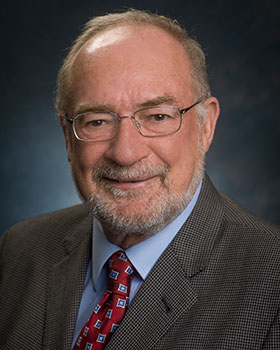 Kearney is an international expert in monoclonal antibodies and their source: immune cells known as B cells that produce the antibodies necessary to fight off infections and other immune threats. His contributions to immunology during four decades at UAB have earned him selection as UAB's 2013 Distinguished Faculty Lecturer. The Academic Health Center's most prestigious faculty award celebrates its 50th anniversary Nov. 13 with Kearney's lecture and several special events (see box).
Kearney is an international expert in monoclonal antibodies and their source: immune cells known as B cells that produce the antibodies necessary to fight off infections and other immune threats. His contributions to immunology during four decades at UAB have earned him selection as UAB's 2013 Distinguished Faculty Lecturer. The Academic Health Center's most prestigious faculty award celebrates its 50th anniversary Nov. 13 with Kearney's lecture and several special events (see box).
Backbreaking science
Kearney, a full professor in the microbiology department since 1983, holds appointments as a senior scientist in the UAB Comprehensive Cancer Center and the UAB Center for Disaster Preparedness. His research has uncovered several fundamental facets of B cell biology and had applications from juvenile diabetes to biochemical warfare. His lab is now exploring potential new treatments for allergies and asthma. "And as I look back," Kearney said, "90 percent of what I've done can be traced back to the cell line I developed at the University of Cologne" during his sabbatical year with noted immunologist Klaus Rajewsky, Ph.D.
In 1978, monoclonal antibodies clearly had great potential both as research tools and as clinical treatments to seek and destroy cell types associated with disease, such as cancer cells. But no one had actually been able to make a true monoclonal antibody. The process, then as now, involves combining a B cell that produces the desired antibodies with an immortal plasma cell tumor cell. The new cell, called a hybridoma, can then churn out antibodies indefinitely. The sticking point was that the plasma cell also created antibodies, which contaminated the end product. Kearney found the solution by isolating a line of plasma cells that were unable to make their own antibodies.
That cell line, known as P3X63Ag8.653, "became famous worldwide instantaneously," said Rajewsky, who describes Kearney's experiments as "difficult" and "risky." For his part, Kearney recalls "it was backbreaking work." The reason he succeeded where others had failed, he says, was sheer "stubbornness." Monoclonal antibodies now are used regularly in research and clinical care, with more than 100 FDA-approved therapies available for cancer and autoimmune diseases. But that success wasn't instant, he notes. "Everyone talks about the 'magic bullet,' but it took many years for the first really successful monoclonals to get FDA approval."
It wasn't until 2011, intrigued by a link to Google Scholar, that Kearney decided to track citations to the paper where he described his breakthrough. "I was amazed" by the number of citations, Kearney said. "I'd never bothered to look before, but it's pleasing at this point in my career."
From Orroroo to UAB
Kearney's fateful journey to Germany, and his 40 years and counting in Birmingham, might never have happened without another sabbatical — a visit by UAB's Harold M. Fullmer, D.D.S., to Kearney's alma mater, the University of Adelaide, Australia, in the 1960s.
Kearney was born in Orroroo, a small town he describes as "way out in the bush in South Australia," where his father and mother were schoolteachers. He earned a bachelor's degree in dentistry from the University of Adelaide in 1969, but along the way he realized he loved biology much more than patient care. Kearney became the first student in a new dental Ph.D. program at the University of Melbourne, but when he finished in 1973, "I didn't really know what I was going to do," he admits.
He sent a letter to Fullmer, director of the UAB Institute for Dental Research, seeking a postdoctoral position. Fullmer appointed him as a visiting Foreign Dental Scientist in the institute, and Kearney has remained at UAB ever since.
Kearney's B cell research has been funded continuously by the National Institutes of Health for 35 years; he has the longest-running, single PI-directed NIH grant at UAB. He has more than 160 peer-reviewed publications to his credit and has served on the editorial boards of International Immunology, Developmental Immunology, and Research in Immunology.
As an internationally renowned immunologist, Kearney has had many opportunities to move to other institutions, but he says he never considered leaving Birmingham. "What I find that's unique about UAB is the spirit of cooperation," he says. "A lot of us grew up at the same time as the buildings grew up. We have the UAB spirit. That's why I stayed."
Special attention
Kearney's willingness to share his techniques with colleagues and students alike has created an enduring legacy that matches his own scientific achievements, said Frances Lund, Ph.D., Charles H. McCauley Professor and chair of the Department of Microbiology.
Lund first met Kearney when she was a graduate student at Duke University. "He was an invited speaker and already a very prominent immunologist," she said. But "he made me feel as though what I was studying was important and worth doing — and that can make all the difference in the world for a graduate student."
"I like being around young people and helping them and collaborating with them," Kearney said. The feeling is clearly mutual. Kearney received the UAB Dean's Award for Excellence in Mentorship in 2010. His lab has trained 45 graduate and postdoctoral students, "all of whom have stayed on in science, so I didn't run them off," Kearney said with a laugh.
On the contrary, "John continues to train the best and brightest at UAB," Lund said. "Students flock to his lab," she noted, but so do established scientists. "Investigators, like myself, seek out his advice and guidance, and our new faculty recruits come to look at UAB, just like I did, because they know that there must be something special here if John has stayed for 40 years," Lund said. "He exemplifies what the rest of us aspire to be — a great scientist and an even better human being."
